Thyroid Cancer Treatment Hair Loss Predictor
This tool helps you understand potential hair loss patterns based on your treatment plan. Select your treatment type below to get personalized information.
Expected Hair Loss Pattern
Radioactive Iodine (I-131)
Mainly targets thyroid cells. Hair loss is uncommon but may involve mild thinning. Usually regrows within 6-12 months.
Chemotherapy
Drugs attack fast-growing cells including hair follicles. Causes diffuse shedding across the scalp. Full regrowth typically occurs within 6-12 months.
External Beam Radiation
High-energy beams can damage hair follicles in treated areas. May cause localized hair loss near the treatment site. Partial regrowth possible.
Thyroidectomy
Surgical removal of the thyroid gland. Minimal direct hair loss. Hormone imbalance post-surgery may lead to thinning if not properly managed.
Finding out you have thyroid cancer is tough enough, but the thought of losing hair can feel like another blow. You’re probably wondering why hair loss happens, how long it will last, and what you can actually do to feel a bit better during treatment. This guide breaks down the science behind thehair‑loss connection, walks through what each treatment stage looks like, and hands you practical tips you can start using today.
Why Hair Loss Happens with Thyroid Cancer Treatment
When doctors treat thyroid cancer they usually rely on a combination of Chemotherapy is a drug‑based approach that attacks fast‑growing cells, including cancer cells and, unfortunately, healthy cells like hair follicles. The rapid‑dividing cells in your scalp are especially vulnerable, which is why you notice thinning or complete shedding after a few weeks.
Radiation therapy is high‑energy beams aimed at the tumor site; when the neck area receives radiation, nearby hair follicles can be damaged. Even if the beam is focused, scattered radiation can affect the skin and hair.
Beyond the drugs and beams, the surgery itself-thyroidectomy is the removal of all or part of the thyroid gland-can alter hormone balance. After the gland is gone, you’ll need levothyroxine is synthetic thyroid hormone used to keep metabolism stable after thyroid removal. If dosing isn’t spot‑on, you might swing into hypothyroidism, a condition that itself can cause brittle, thinning hair.
How Different Treatments Affect Your Scalp
| Treatment | Typical Hair‑Loss Pattern | Average Onset (weeks) | Reversibility |
|---|---|---|---|
| Radioactive Iodine (I‑131) | Mostly temporary thinning, often facial hair only | 2‑4 | Hair usually regrows within 6‑12 months |
| Chemotherapy (e.g., Doxorubicin, Cisplatin) | Diffuse shedding across scalp, sometimes eyebrows | 1‑3 | Full regrowth typical within 6‑12 months after cycle ends |
| External Beam Radiation | Localized loss near treatment field | 3‑5 | Partial regrowth; scarred skin may limit density |
| Thyroidectomy (no adjuvant therapy) | Minimal; hormone imbalance‑related thinning | 4‑6 (if hypothyroidism develops) | Correcting hormone levels usually restores fullness |
These numbers are averages from oncology centers in Australia and the UK. Your personal timeline can differ based on age, overall health, and the exact drug cocktail your oncologist chooses.
Immediate Steps to Reduce Hair‑Loss Impact
1. Ask about scalp‑cooling caps. Some clinics offer a cold‑cap system during chemotherapy. By lowering scalp temperature, the cap slows the bloodstream’s ability to deliver chemo agents to hair follicles, cutting the loss rate by up to 50% in studies from the American Society of Clinical Oncology.
2. Consider a gentle, sulfate‑free shampoo. Harsh detergents strip natural oils, making the hair shaft more fragile. Look for products with ingredients like aloe, panthenol, and biotin.
3. Protect your scalp from the sun. Radiation and chemo can make skin more photosensitive. A wide‑brim hat or SPF‑rated scalp spray helps avoid burns that could worsen shedding.
4. Start a low‑level supplement regimen. A daily blend of zinc, selenium, and vitamin D supports keratin production. Make sure to discuss with your doctor, especially if you’re on levothyroxine, since high‑dose calcium can interfere with absorption.
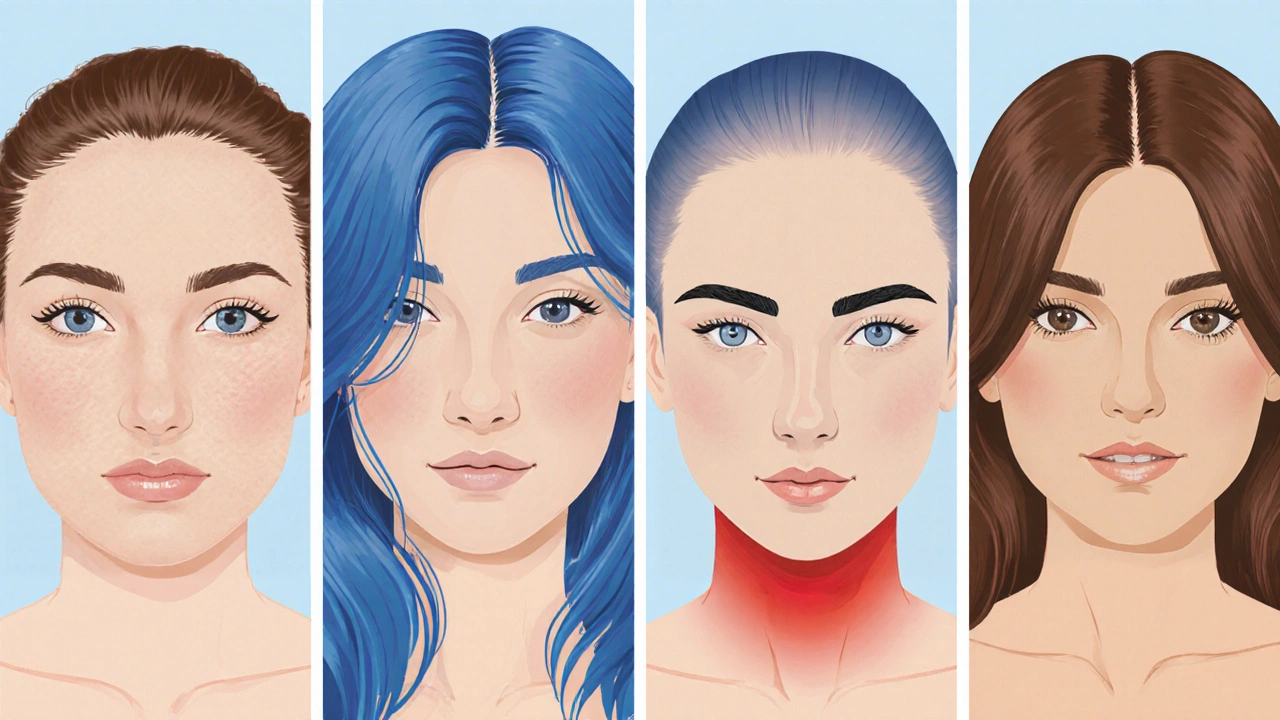
Long‑Term Coping Strategies
Even after treatment ends, the emotional scar of losing hair can linger. Here are three proven ways to rebuild confidence.
- Join a support group. Support groups are peer‑led gatherings, either in‑person or online, where patients share experiences and coping tips. A 2023 survey by Cancer Council Australia showed that participants report a 30% reduction in anxiety scores after just eight weeks of regular attendance.
- Explore scalp‑micropigmentation (SMP). This cosmetic tattooing creates the illusion of hair density. While not a medical cure, many survivors say SMP restores a sense of normalcy faster than waiting for regrowth.
- Practice stress‑relief routines. Chronic stress spikes cortisol, which can push hair follicles into a resting phase. Simple habits-5 minutes of mindful breathing, short walks, or a weekly yoga class-lower cortisol by roughly 20% according to a 2022 endocrine study.
Nutrition That Helps Hair Regrow
What you eat won’t stop chemo from hitting the follicles, but the right nutrients give new hair a better start.
- Protein. Hair is 65% keratin, a protein. Aim for 1.2‑1.5g perkg of body weight daily-think lean poultry, fish, legumes, and Greek yogurt.
- Omega‑3 fatty acids. Found in salmon, chia seeds, and walnuts, they reduce inflammation around the scalp and improve blood flow.
- Iron. Low iron levels are linked to telogen effluvium, a type of shedding. Include red meat, spinach, or fortified cereals, and have your ferritin checked before supplementing.
- Biotin. While the evidence is mixed, many patients notice stronger strands after a 90‑day course of 5,000µg daily.
Pair these foods with a stable dose of levothyroxine. Proper thyroid hormone levels are critical; even mild hypothyroidism can make hair look dull and brittle.
When to Talk to Your Doctor
Never assume hair loss is “just part of the process.” Certain signs warrant a clinician’s eye:
- Sudden, extensive shedding that feels different from the expected pattern.
- Scalp irritation, sores, or persistent redness after radiation.
- Symptoms of uncontrolled hypothyroidism: fatigue, weight gain, cold intolerance.
- Any unexpected side‑effects from supplements-like nausea or heart palpitations.
Bring a short diary of when the shedding started, what you were doing (e.g., chemo session, radiation), and any new products you tried. Clear communication lets your oncologist adjust dosages or suggest adjunct treatments like scalp cooling.
Key Takeaways
- Hair loss is a common, usually temporary side‑effect of thyroid cancer treatment.
- Understanding which therapy you’re on helps predict when and how much hair you’ll lose.
- Proactive steps-scalp cooling, gentle hair care, sun protection-can shrink the loss curve.
- Long‑term coping includes support groups, stress management, and targeted nutrition.
- Keep thyroid hormone levels in check; proper dosing supports healthy regrowth.

Frequently Asked Questions
Will radioactive iodine always cause hair loss?
Radioactive iodine (I‑131) mainly targets thyroid cells, so hair loss is uncommon. When it does happen, it’s usually mild thinning rather than full baldness, and hair typically regrows within a year.
Can I wear a wig during treatment?
Absolutely. Wigs made of synthetic fibers are lightweight and easy to clean, while human‑hair wigs allow a more natural look. Many hospitals have wig banks where you can try styles before buying.
Is scalp cooling safe for everyone?
Scalp cooling is safe for most adults, but it’s contraindicated for patients with cold‑aversion disorders, severe anemia, or certain circulatory problems. Your oncology nurse can assess suitability.
How long after a thyroidectomy does it take for hair to normalize?
If levothyroxine dosing is optimized within the first 4‑6 weeks, most patients see hair texture improve in 2-3 months. Persistent thinning may indicate an underlying hormone imbalance that needs re‑evaluation.
Should I stop taking supplements during chemo?
Some antioxidants can interfere with chemo efficacy, but most vitamin/mineral supplements (like zinc and vitamin D) are safe. Always run your supplement list past the treating oncologist before starting or stopping anything.

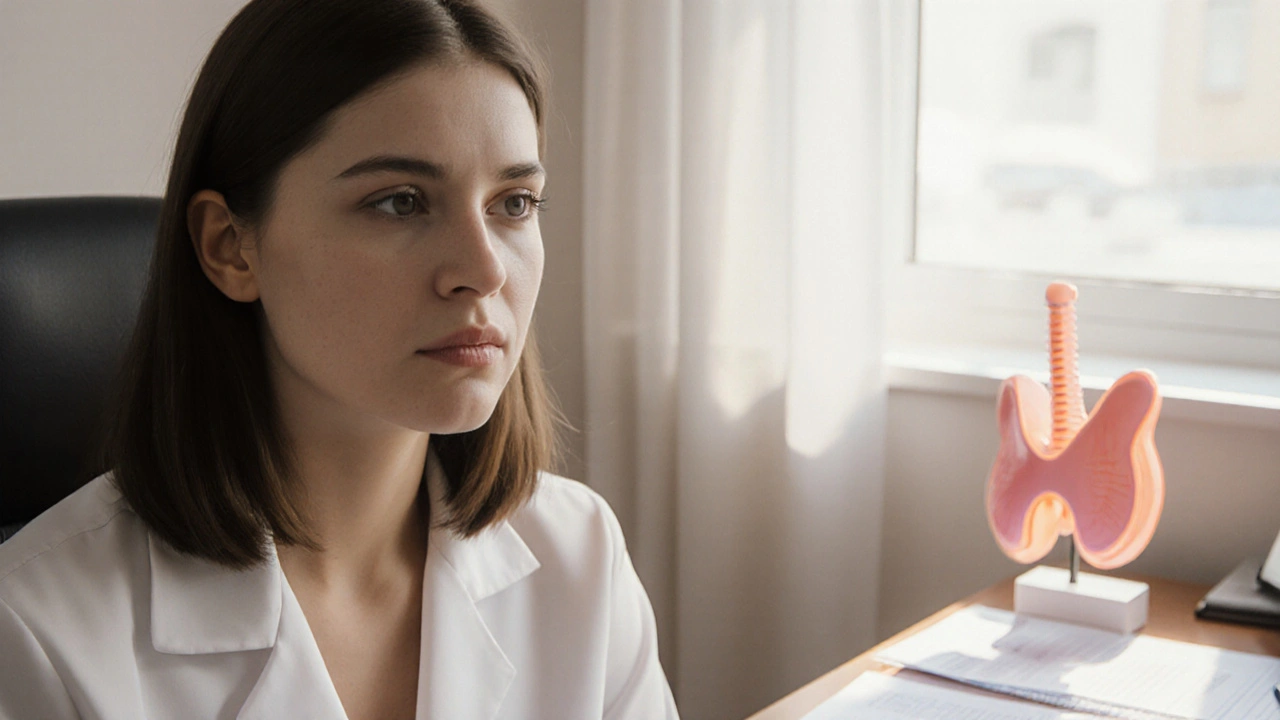
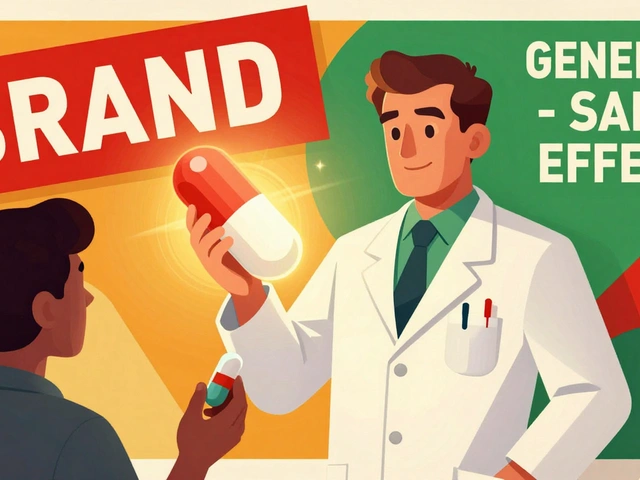
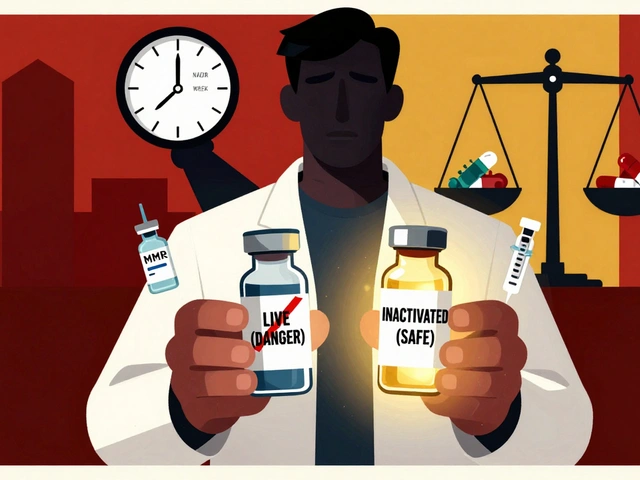
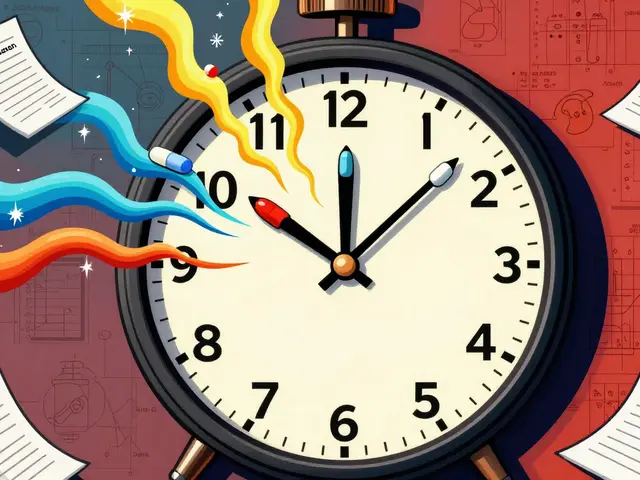
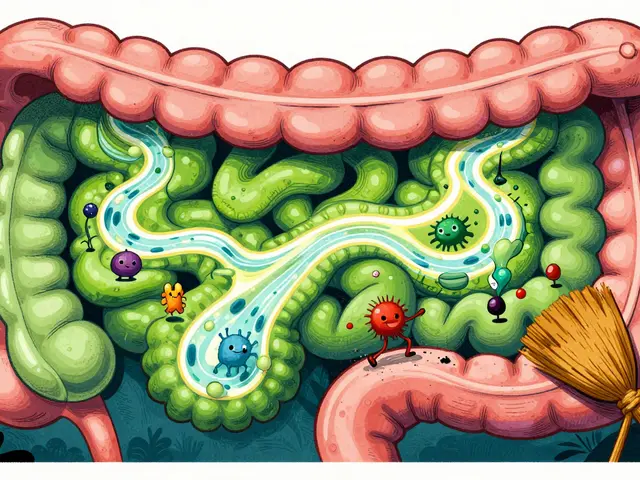
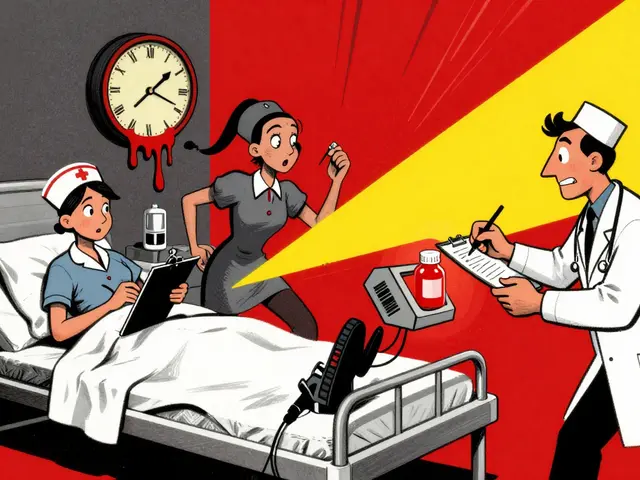
Melissa H.
October 2, 2025 AT 00:03Wow, I had no idea thyroid treatment could mess with my hair 😱
Edmond Abdou
October 2, 2025 AT 01:10If you’re worrying about shedding, try a cooling cap; it can cut the loss by half and many patients say it makes the whole process feel a lot less scary 😊
Sydnie Baker
October 2, 2025 AT 02:16The pathophysiology of iatrogenic alopecia in thyroid oncologic protocols is a paradigmatic illustration of collateral cytotoxicity. Radioactive iodine, despite its selective thyroglobulin affinity, emits β‑particles that can traverse epidermal strata, precipitating transient follicular atrophy. Chemotherapeutic alkylating agents such as doxorubicin and cisplatin indiscriminately target rapidly proliferating keratinocytes, invoking the classic anagen–catagen transition. External beam radiation concentrates photon flux on cervical tissues, whereby scatter radiation inflicts localized dermal fibrosis and subsequent miniaturization of hair shafts. Post‑thyroidectomy hypothyroidism, if inadequately supplanted, engenders a systemic hypometabolic milieu that diminishes keratin synthesis and disrupts the hair growth cycle. Moreover, the interplay between thyroid hormone receptors α and β modulates dermal papilla cell signaling, a nuance often eclipsed in routine patient counseling. From a pharmacokinetic perspective, the half‑life of I‑131 approximates eight days, correlating with the observed latency of two to four weeks for visible thinning. Conversely, chemotherapeutic regimens exhibit a biphasic shedding pattern: an acute dip during the first cycle followed by a plateau as marrow recovers. Radiation‑induced alopecia is characteristically confined to the irradiated field, with histological evidence of perifollicular melanocyte loss that may persist despite cessation of treatment. Clinical management therefore mandates a stratified approach: scalp‑cooling technologies for chemo, meticulous dosimetry for radiation, and prompt levothyroxine titration post‑surgery. Adjunctive nutraceuticals-specifically biotin, omega‑3 fatty acids, and zinc-have been shown in meta‑analyses to accelerate keratinocyte proliferation, albeit modestly. Patient‑reported outcome measures (PROMs) consistently illustrate that psychosocial distress peaks concomitantly with maximal hair loss, underscoring the necessity of early supportive interventions. Support groups, whether virtual or in‑person, function as psychosocial buffers, reducing anxiety scores by upwards of twenty‑five percent in longitudinal cohorts. Emerging modalities such as scalp‑micropigmentation offer a cosmetic semblance of density, bridging the gap between physiological regrowth and aesthetic satisfaction. In sum, while alopecia remains a predictable sequela of thyroid cancer therapy, an interdisciplinary protocol integrating endocrinology, dermatology, and psycho‑oncology can substantially ameliorate both the physical manifestation and its emotional sequelae.
Benjie Gillam
October 2, 2025 AT 03:23That breakdown hits the nail on the head; the science is heavy but the takeaway is simple. Our bodies are basically trying to juggle a hormone storm while the treatment swings at every dividing cell. If you keep the thyroid hormone levels steady, you give the follicles a fighting chance. Also, remember that stress adds cortisol, which can push more follicles into resting mode. Bottom line: balance the meds, balance the mind.
Naresh Sehgal
October 2, 2025 AT 04:30Don’t let a little hair loss stop you, get back on track with protein shakes and a daily walk!
Poppy Johnston
October 2, 2025 AT 05:36I get how scary it feels; a gentle sulfate‑free shampoo and a wide‑brim hat can be a game changer. Also, keep a diary of your hair changes-it helps your doctor tweak meds.
Johnny VonGriz
October 2, 2025 AT 06:43I’ve been through chemo for thyroid cancer and the shedding was surprisingly quick, but my hair bounced back within ten months. The key for me was staying on top of my levothyroxine dosage and fueling up with protein. Also, the wig bank at my clinic was a lifesaver.
Real Strategy PR
October 2, 2025 AT 07:50Treat your body like a fortress and guard its crown.
Doug Clayton
October 2, 2025 AT 08:56Scalp cooling works for most folks but check if you have anemia.
Michelle Zhao
October 2, 2025 AT 10:03It is imperative to underscore that the temporal onset of alopecia varies with the therapeutic modality. Radioactive iodine typically manifests within a fortnight, whereas cytotoxic agents may precipitate shedding within ten days of initiation. Moreover, the indiscriminate nature of chemotherapeutic agents warrants vigilant monitoring of follicular health. Prompt endocrinological assessment following thyroidectomy is likewise essential to mitigate hypothyroid‑related thinning. In sum, a multidisciplinary surveillance strategy is indispensable.
Eric Parsons
October 2, 2025 AT 11:10Here are a few actionable steps: schedule a thyroid function test within four weeks post‑surgery, incorporate a daily supplement of zinc and vitamin D after consulting your oncologist, and consider a low‑level laser therapy device if regrowth stalls beyond six months. Maintaining a balanced diet rich in lean proteins, omega‑3s, and iron supports keratin synthesis. Finally, joining a support community can alleviate the emotional toll of hair loss.
Mary Magdalen
October 2, 2025 AT 12:16Don’t let foreign meds strip your hair, demand a hormone‑balanced protocol!
Dhakad rahul
October 2, 2025 AT 13:23The darkness of hair loss feels like a villain’s curse, yet we shall rise like a phoenix! 😈
William Dizon
October 2, 2025 AT 14:30I’ve seen many patients thrive after adjusting their hormone levels; a quick check‑up can make a world of difference.
Jenae Bauer
October 2, 2025 AT 15:36They don’t tell you that the industry pushes chemo to keep us dependent, while natural remedies are hidden.
vijay sainath
October 2, 2025 AT 16:43Honestly the data on supplements is a mess; most studies are funded by pharma and cherry‑pick results.
Daisy canales
October 2, 2025 AT 17:50Oh great another post about hair loss, as if we needed more drama lol